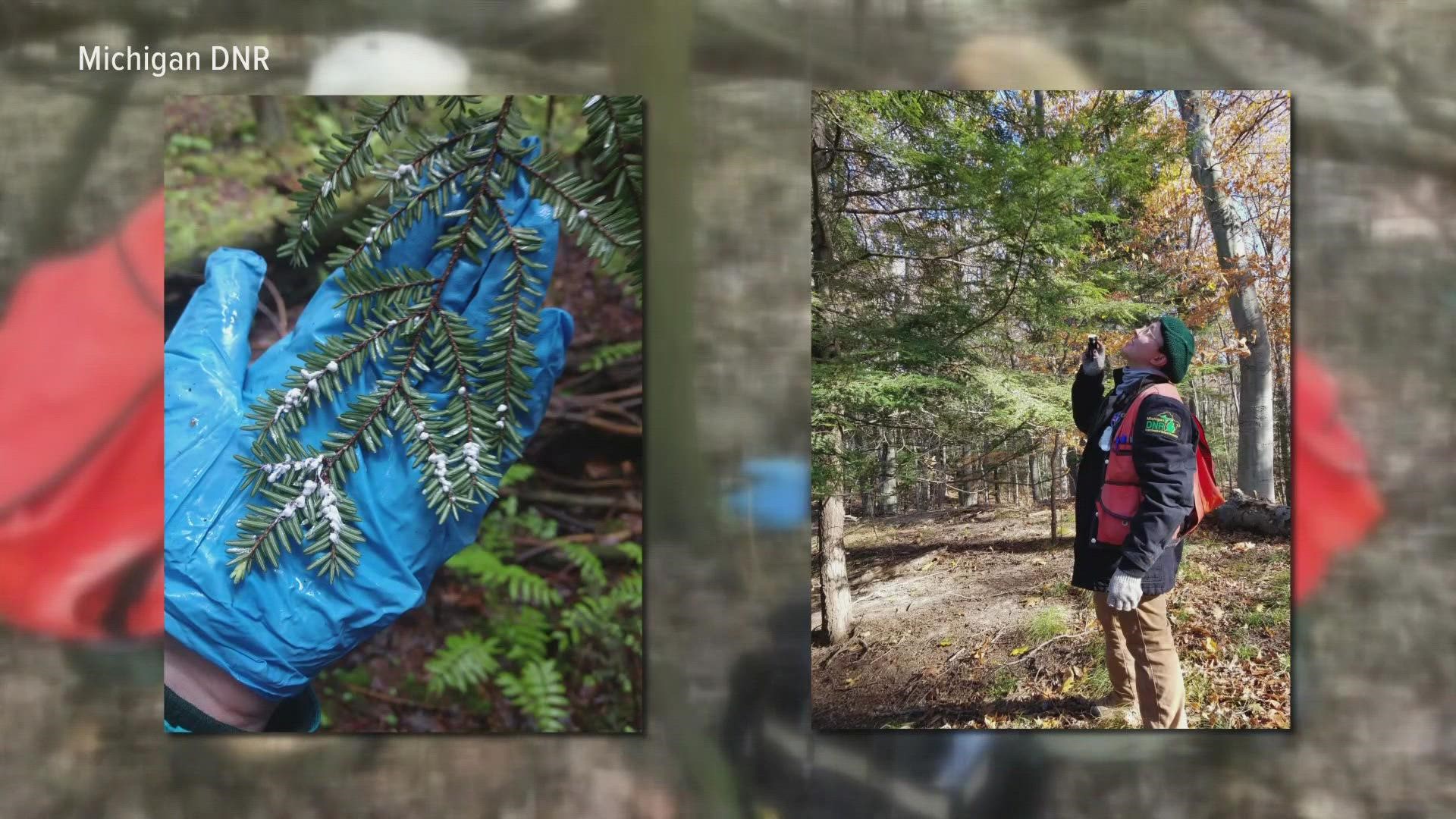GRAND RAPIDS, Mich — Since the early 2010s, Michigan has been dealing with Hemlock Wooly Adelgid (HWA). They are microscopic insects that feast on hemlock trees. Left untreated, they could spread, killing thousands of trees in the process.
Statewide mitigation efforts have been identifying adelgids and treating trees for a few years. Now, a representative with the Michigan Department of Natural Resources (DNR) said those efforts are working.
"We're treating a lot of a lot of trees, and protecting a lot of trees in the meantime," said Heidi Frei, forest health specialist with the DNR. "There is certainly a reduction in amount of adelgids than if we had done nothing."
During this time in winter, it is ideal for DNR and partnership crews to survey forests for trees infected with the adelgids. That is because they are fixed on the tree, feeding and producing eggs. Later this year, the eggs will hatch and spread.


"They have this long, piercing, sucking mouthpart that they just extend and insert into the tree," said Frei. "They basically tap into the tree's resources. So, when they become more numerous, they just suck the life right out of the tree."
HWA have wreaked havoc in other parts of the country. They were identified at P.J. Hoffmaster State Park in 2017, and now are found in seven other state parks on the west side of the state.
Frei said the goal at this point is containment. For now, the HWA have not been found further north than the Ludington area. The DNR hopes it stays that way.
"To think about that ecologically, we're talking about areas that are protected with critical dunes sensitive landscapes," said Frei. "Areas that are important for migratory birds. Hemlock is a really key species, ecologically for other species, not just for birds."
When the HWA are found on a tree, it is treated with a chemical that taps into the tree's vascular system. Then, the adelgid are feeding on the poison, and that causes their death, rather than the death of the tree.
While the HWA are not visible to the eye, evidence of their presence are. White, fuzzy, cotton-ball looking balls at the base of the needle can be seen on infected trees. Hence, the name wooly adelgids.


Each adelgid can produce hundreds of offspring in a year. These tiny insects spread by hitching a ride with a bird, squirrel, deer, a backpack or fleece. Even the wind can carry them to a new tree.
Due to how they spread, Frei said it is important to be on the lookout when around hemlock trees. If left unchecked, "the ramifications of that within the state are pretty severe," she said.
RELATED VIDEO: Michigan agencies offer $3.6M to fight invasive species
►Make it easy to keep up to date with more stories like this. Download the 13 ON YOUR SIDE app now.
Have a news tip? Email news@13onyourside.com, visit our Facebook page or Twitter. Subscribe to our YouTube channel.

